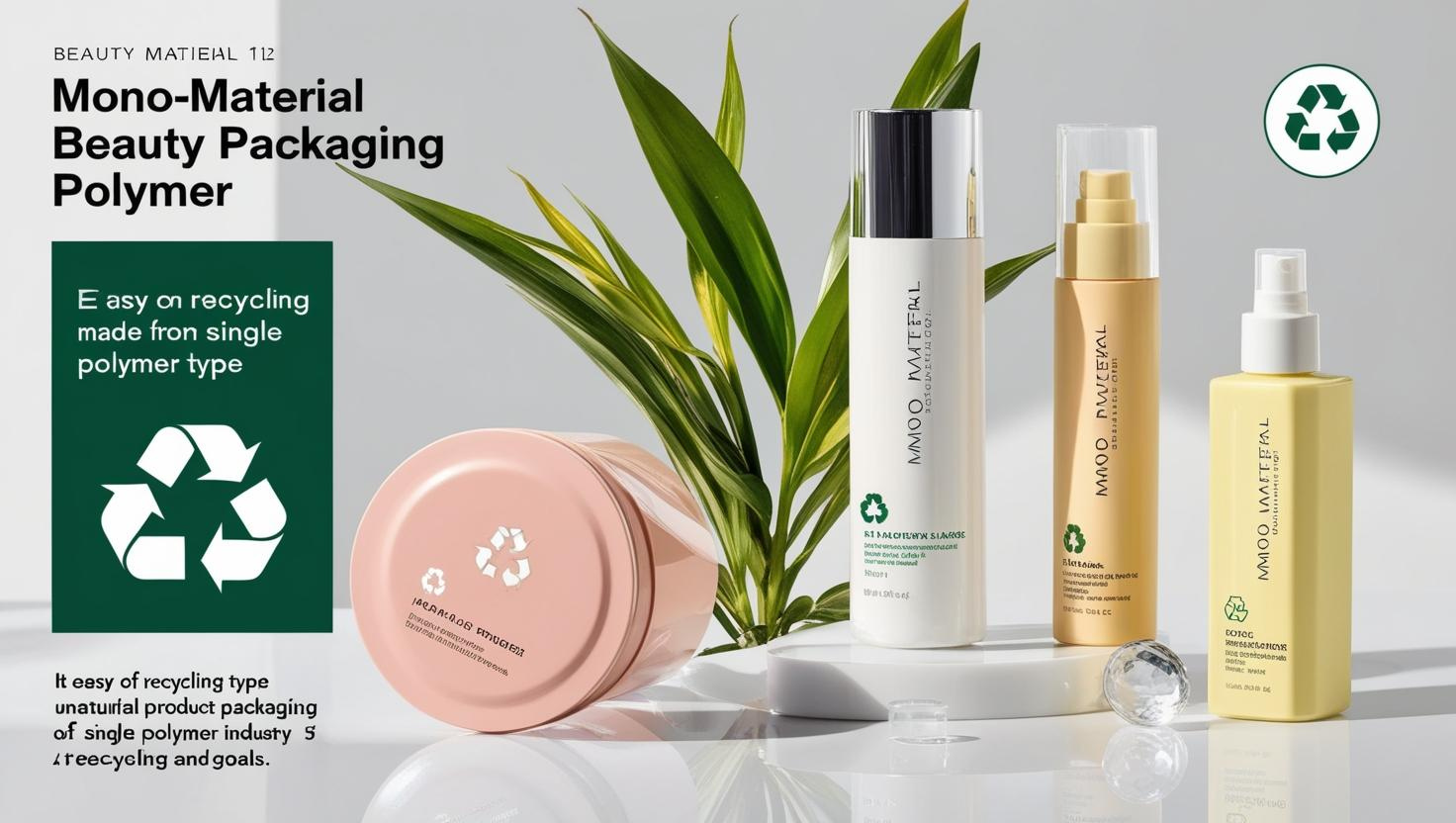
As sustainability goals accelerate across the beauty industry, mono-material packaging is becoming a key design principle. Unlike traditional packaging, which combines different resins, coatings, or adhesives, mono-material packaging is made from a single polymer type—making it far easier to recycle (Closed Loop Partners: The Critical Role of Design in Enabling Recycling)1.
But is it feasible for all cosmetics? Let’s explore how it works, its benefits, and the challenges brands need to be aware of.
What Is Mono-Material Packaging?
Mono-material packaging2 means that all parts of the packaging—container, closure, inner layer—are made from the same plastic. For example, a jar and cap both made from PP.
Unlike mixed packaging, which requires disassembly or special processing, mono-material items can be dropped into a recycling bin and processed more efficiently.
Why Does It Matter?
Packaging made from multiple materials—like PET bottles with PP caps and foil-lined labels—is difficult to recycle because the components melt at different temperatures and require manual separation (Recycling Today: The Importance of Mono-Material Packaging)3.
Mono-material packaging reduces contamination, simplifies sorting, and supports a more circular economy.
Common Mono-Material Combinations in Cosmetics
| Resin | Used In | Example |
|---|---|---|
| PP | Jars, caps, inner lids | 100% PP airless pump4 |
| PE | Tubes, squeeze bottles | PE + EVOH Greenleaf™ tubes5 |
| PET | Bottles, sprays | Mono-PET spray bottles6 |
These solutions support recyclability and reduce complexity during disposal.
Is Mono-Material Always Better?
While it simplifies recycling, mono-material design may limit certain functions:
- Reduced barrier performance
- Less flexibility in cap/pump design
- Aesthetic limitations (e.g. glossy finishes, metallic coatings)
However, innovation in recyclable barrier coatings7 is helping brands strike a balance between sustainability and performance.
Final Thoughts
Mono-material packaging may not be the flashiest trend—but it’s one of the most practical ways to make cosmetic packaging more recyclable.
By sticking to a single resin, brands can reduce waste, simplify sorting, and avoid contamination in recycling streams. It’s a design shift with real environmental impact—and it’s here to stay.
Footnotes
-
Closed Loop Partners: The Critical Role of Design in Enabling Recycling ↩
-
Ellen MacArthur Foundation: Plastics Initiative - Designing for Circularity ↩
-
Recycling Today: The Importance of Mono-Material Packaging ↩
-
Albéa: Eco-Design Airless Solutions Innovation Launch ↩
-
Albéa: Greenleaf 2 PE-based Tube Sustainable Innovation ↩
-
CosmeticsDesign-Europe: Mono-materials in Beauty Packaging Challenges and Developments ↩
-
Avery Dennison: Recyclable Barrier Materials Overview ↩

